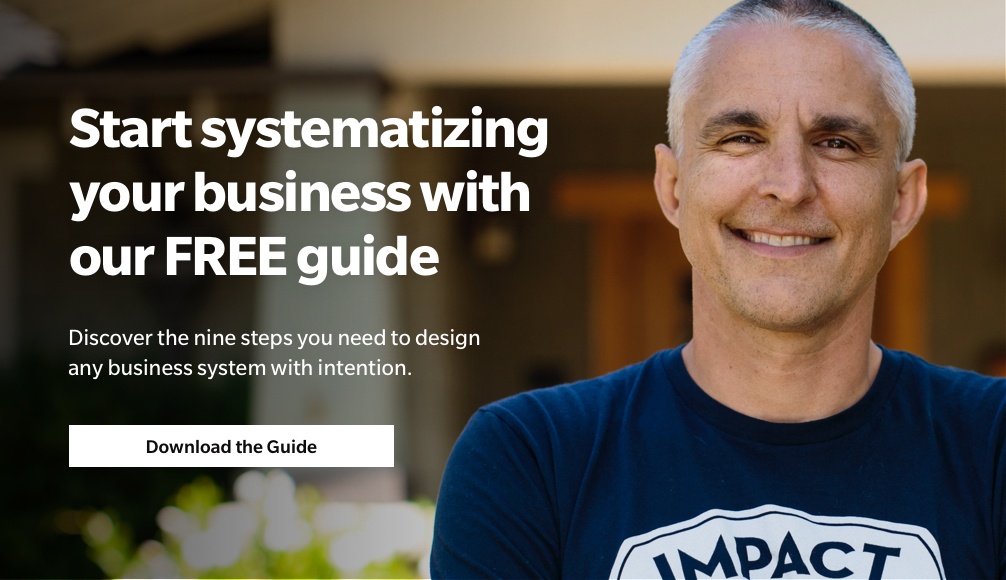Business owners often come to us for help building a business model prototype—what we call a franchise prototype. They’ve read about the concept in The E-Myth Revisited and feel that it’s the key to getting what they want: a business that gets the results they desire at the standard they expect—without relying so much on them to get those results.
They’re not wrong. A business model prototype is a means to that end—but it’s the thinking behind a prototype that really makes a business model work. A prototype like the one developed by Ray Croc for McDonald's is not just a system of systems; it’s a carefully designed model of excellence that guarantees that every McDonald’s customer anywhere in the world will get the same curated experience. It’s an experience that’s rich in the brand values and quality standards that Ray embedded in the model when he built it.
But you don’t have to have a mega-franchise to benefit from a precise, well-branded business model. You can create a model for your own small business by taking how you currently do your work with excellence—your way we do it here—and systematizing it.
What is a franchise prototype?
The central concept of a franchise prototype is this: Systems run the business, and people run the systems. A business model integrates all the elements needed to make your business work and sets them up to work in concert to achieve your goals. Essentially, it transforms your business into an organism that’s driven by the action and interaction of its many parts.
Don’t let the term “franchise” throw you off. Franchising may not be part of your vision for the future, but that’s not what a franchise prototype is truly about. It’s about thinking like a franchiser—creating a business model that you build so clearly and precisely that anyone can step in and understand it. When you create systems with that vision in mind, your people will learn to run them. This will ensure that your business can function efficiently without you being involved daily or, ultimately, at all.
A business model prototype eliminates people-dependency
When you own a business, you should have a clear idea of what “excellent” looks like to you. Often, it’s how you’d perform that task or deliver that result. So if you want everything to run to your standards of excellence, you need to design unique systems around how you think work should get done, then train people to operate those systems to get consistent results.
Take, for example, a simple cup of coffee. Imagine you run a restaurant where you serve free coffee refills. You believe that once a cup is less than half full, the coffee is cold—and just topping it off will make for a less tasty cup. So when you see that a customer has a near-empty mug, you bring them a fresh cup of coffee. You may lose a little money, but you believe this standard of excellence generates more loyal customers. You’ve taken a food delivery system and made it your own.
Your business model prototype puts your ideas to the test in the real world. It takes your hypothesis (that this special touch will generate more loyal customers) and puts it into action. And your only criteria for measuring that is: Does it work? Once you’ve completed a prototype of each of your systems, you should be able to say to any employee, “Let me show you how it works,” and expect them to run it the way you would.
Having defined systems that show how tasks are performed means that as employees come and go, your standards won’t suffer.
A small business model prototype in action
A franchise prototype is simply a model of your proprietary way of doing business. So begin by asking:
- What's unique about my business?
- How do I or the members of my team perform a task better than any other company?
- What do we offer my target market that differentiates us from our competitors?
Look at your business as if you intend to franchise it. With a clear picture of what sets your company apart, start the work of documenting systems that reflect and support your unique way of doing business. After all, processes that live in your head are just ideas. Once you write them down, they become assets. What you’ll end up with is your vision translated into a clear network of systems, a franchise prototype—or what you might proudly call the way we do it here.
A turn-key business has real value because it’s completely transferable. You could sell it or hand it over to someone else (a family member, an employee, a buyer), and they could run it just as well as you do because you’ve put systems in place that allow them to do so. This type of model—a system-dependent business—doesn’t only promise a high-equity return; it gives you the freedom to choose how you show up in it. It’s the key to creating a company that doesn’t depend on you.
If you’d like support to get started, we’re here to help.





Comments